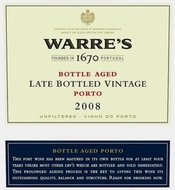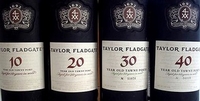With the turn into January and perhaps the end of our Covid isolation, we can look forward to the coldest weather of the year with perhaps a bit of optimism. With frigid days and long nights in the forecast, this is the optimal time to enjoy a fine Port. Port is a wine that recalls the warmth of a summer sun and bathes the palate in luscious ripeness. True Port comes from a demarcated area along the Douro River of northern Portugal. This is rugged land – too spare to permit nearly any agricultural endeavor other than viticulture. The schist soils are rocky, the slopes are steep, often terraced, and a great deal of manual labor is required to tend and pick the grapes.
There are many grape varieties permitted for Port production, but even the best and most famous of them, the Touriga Nacional, is hardly known outside the Douro. The tradition of Port production, however, stretches back more than three centuries, and Port producers have refined their winemaking techniques to optimize the character of the local grape varieties and capture the fire of the summer sun for us to enjoy throughout the dark months.

Port is a fortified wine. That means that after the grapes are picked, fermentation begins in a normal manner with yeasts consuming the grape sugars and turning them into alcohol. Before the fermentation is complete, however, the process is arrested by the addition of aguardente, a neutral grape brandy that raises the alcohol content while retaining the natural grape sugars of the wine. The resultant wine is then put into barrels for aging. There are other nations that use the same fortification process to make Port-style wines, true Port (or Porto) retains a distinctive character from its unique terroir in Portugal.

Even within the realm of true Ports, though, there is much that is confusing. The consumer is faced with choosing among Vintage Ports, Late bottled Vintage Ports, Colheita Ports, White Ports, Rosé Ports, Ruby Ports, Tawny Ports, Single Quinta Ports and more! What’s the difference?
Most larger Port houses will offer a standard Ruby Port and Tawny Port on the market. These terms refer to the color of the bottlings, with Ruby Ports having the deep color and rich fruit of young wines. Tawny Ports have an amber to brown edge to their color. This comes from aging in barrel for several years. Actually, the cheapest versions of Tawny Ports are blends of White Port and Ruby Port. These house tawnies are quite different from the age-designated Tawny Ports we will discuss later. There are around 15 white grapes permitted for Port production and these are sometimes used for White Port. White Port can be found in the US market and is a fine apéritif when served slightly chilled. Rosé Port is a relative newcomer but expect to see more of it in years to come.
Vintage Port is the most exalted of all Ports. Each Port producer decides whether to "declare" a vintage in a given year. Sometimes a vintage is widely declared, sometimes only a few producers will declare in a certain year. In any case, Vintage Port must pass a taste test and be bottled within about 30 months of the harvest. Vintage Ports are intended to age in bottle for many years. It is safe to assume that consumers should wait at least 10 years from the harvest before drinking their Vintage Ports and probably 20. Some of the biggest vintages, like 1945, 1963, 1977 and 1994, require 20 years of age or more to show their best. You can age Vintage Port yourself or pay a hefty premium to buy fully mature Vintage Port. An assiduous search of the market can reveal relative bargains among Ports since purchase dates and prices can vary widely among vendors. When at its best, Vintage Port is wonderfully smooth and harmonious – vinous velvet on the palate. Great Vintage Port is one of the world’s best wines – a treat that should be experienced by every wine aficionado. I recall sampling a 1948 Taylor Fladgate Vintage Port at almost 50 years of age and it remains the finest Port I have ever consumed, although others have come close.
Late Bottled Vintage Port (LBV) spends 4-6 years in barrel before being bottled. Wine matures more quickly in barrel than in glass so LBV Ports are most often fully ready to drink upon release. LBV Ports can approximate the style of Vintage Ports, and the price is substantially lower than that of Vintage Port. There are a few producers of “traditional” LBV Ports which spend the required 4-6 years in barrel and an additional 4 years in bottle before release. These Ports are generally unfiltered and will contain substantial sediment. The best-known examples are Smith-Woodhouse LBV and Warre’s Bottle-Aged LBV.

While Vintage Ports get the most adulation, many producers consider age-designated Tawny Ports to be the finest expression of the Port winemaker’s craft. The best Tawnies are an exquisite tasting experience. Age-designated Tawny Ports are generally labeled 10-year Tawny Port, 20-year, 30-year and 40-year. A fine 20-year Tawny Port can offer a complex array of spices, citrus peel, nuts, raisins, caramel and toffee among other nuances. The price of the 20 year and older Tawnies can be high, but to some Port lovers, they are the finest of all Ports.

There are Ports of a vintage available as well. These are also known as "Colheita" Ports and are, in reality, Tawny Ports of a single year. They have the same characteristics of Tawny Ports of commensurate age but have special appeal as birthday or anniversary gifts. Colheita Ports must age for a minimum of seven years in cask, but most age much longer. The bottling date is usually on the label. Port houses like Kopke, Barros and Niepoort are some that specialize in offering a wide range of Colheita Ports.
All this information about the various forms and permutations of Port might only further confuse the issue. Those who have a favorite brand are probably happy to continue buying that label. For those who seek variety in their Ports, though, there is much to sample. Even experimenting within a category – age-designated Tawny Ports, for instance – can reveal a wide range of aromas and flavors that will tantalize the senses. Give your palate some bottled sunshine during these long winter nights and make good Port part of your wine enjoyment.
